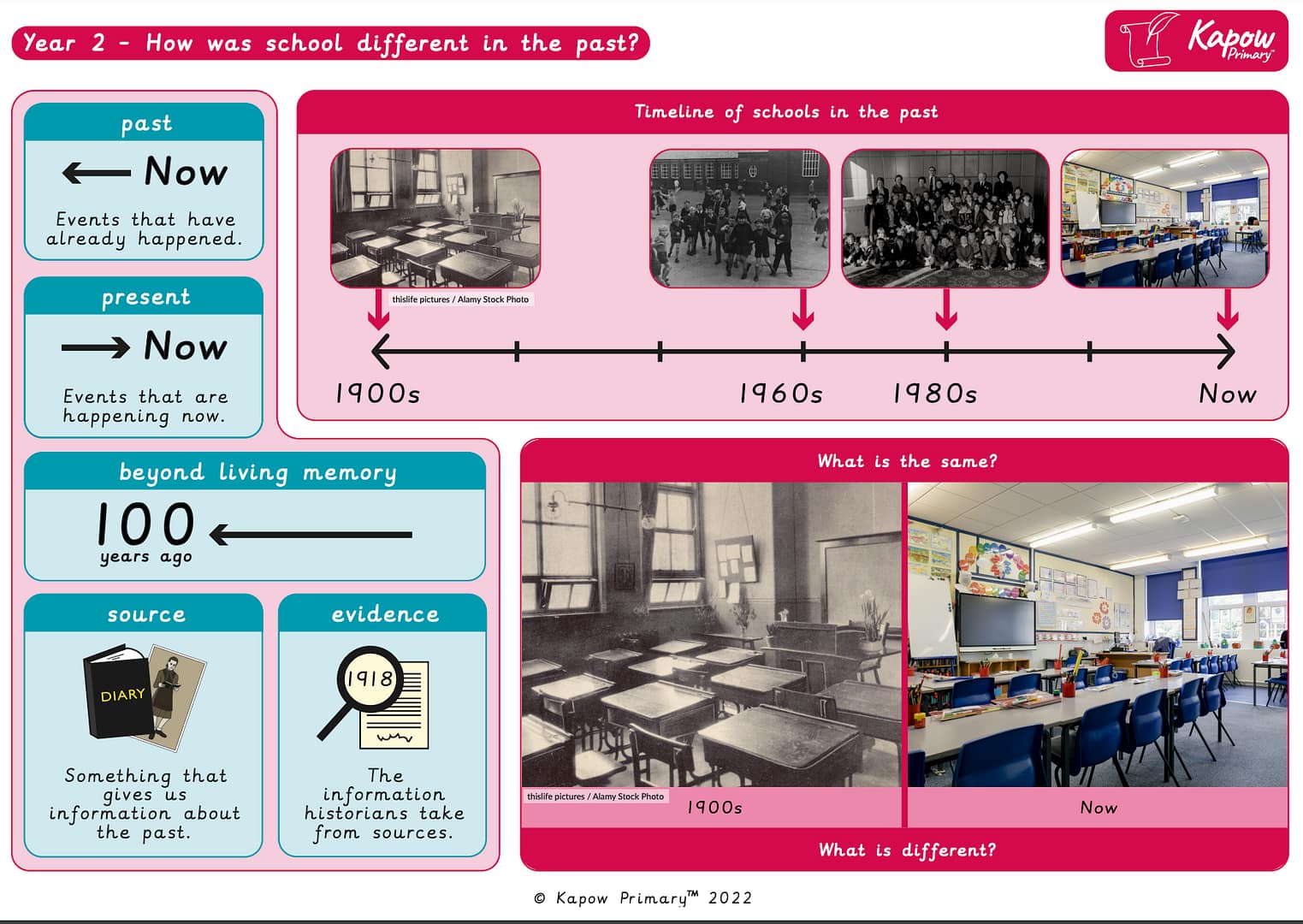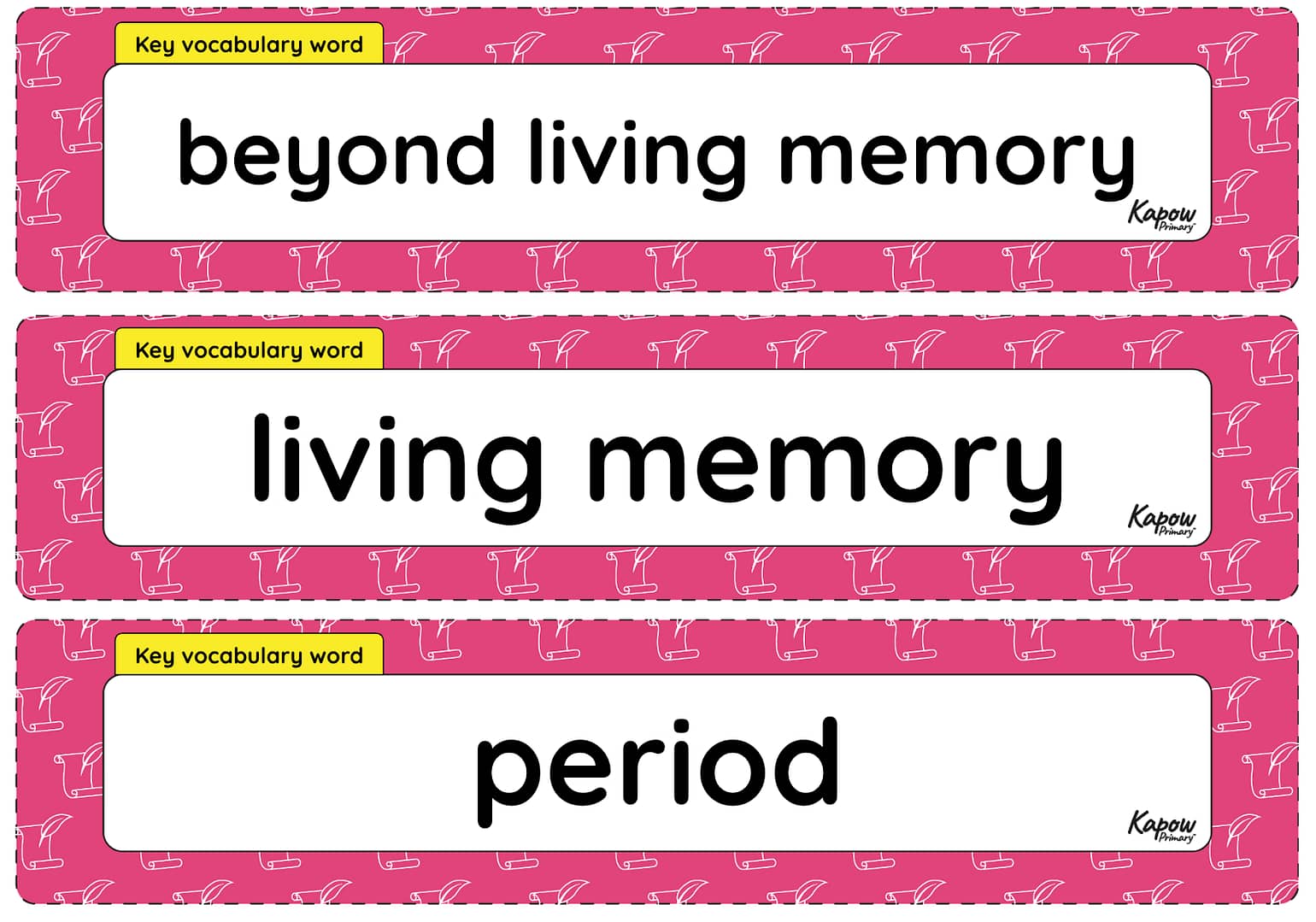How was school different in the past?
This unit hub can be used to inform your medium-term plan and to navigate to related resources.
The Curriculum and Assessment Review final report has been released. We’re reviewing the recommendations and planning for future updates. Learn more
- Subjects >
- History >
- Key stage 1 >
- Year 2 >
-
How was school different in the past?
Unit outcomes
Pupils with secure understanding will be able to:
- Correctly order and date four photographs on a timeline and add some dates.
- Ask one question about schools in the past.
- Make one comparison between schools in the past and present.
- Use sources to research and develop an understanding of what schools were like 100 years ago.
- Identify three features of a classroom now and a classroom 100 years ago, identifying some similarities and differences.
- Recognise two similarities and two differences between schools now and schools in the past.
- State whether they would have preferred to go to school in the past or not and explain why.
Suggested prior learning
How have explorers changed the world?
Get startedLessons
Lesson 1: Were schools different in the past?
- To find out how schools have changed over time.
Lesson 2: How have schools changed within living memory?
- To investigate what school was like in the past.
Lesson 3: How were schools different in the 1900s?
- To investigate what schools were like in the 1900s.
Lesson 4: How have schools changed?
- To compare a modern classroom with a classroom 100 years ago.
Lesson 5: What is similar and different about schools now and in the past?
- To compare three periods of time.
Lesson 6: Would you prefer to have gone to school in the past?
- To express a personal response to history.
Optional Remembrance lesson: What can we learn from a soldier’s story?
- To explore what happened to Walter Tull using photographs.
Key skills
Key knowledge
Related content
Unit resources

Knowledge organiser – History Y2: How was school different in the past?
Aimed at pupils, a single page document that gives key facts and definitions from the 'How was school different in…

Vocabulary display – History Y2: How was school different in the past?
A display version of the vocabulary from the 'How was school different in the past?' unit.
Cross-curricular opportunities
English
‘Pupils should be taught to:
- maintain attention and participate actively in collaborative conversations, staying on topic and initiating and responding to comments
- ask relevant questions to extend their understanding and knowledge
- give well-structured descriptions, explanations and narratives for different purposes, including for expressing feelings’
See National curriculum - English key stages 1 to 2.
Geography
‘Pupils should be taught to:
- use world maps, atlases and globes to identify the United Kingdom and its countries, as well as the countries, continents and oceans studied at this key stage.’
See National Curriculum – Geography key stages 1 to 2.
Art and design
‘Pupils should be taught:
- to use drawing, painting and sculpture to develop and share their ideas, experiences and imagination.’
See National curriculum - Art and design key stages 1 to 2.
Mathematics
‘Pupils should be taught to:
- recognise and use language relating to dates, including days of the week, weeks, months and years’
See National curriculum - Mathematics key stages 1 to 2.
British values: Rule of law.

